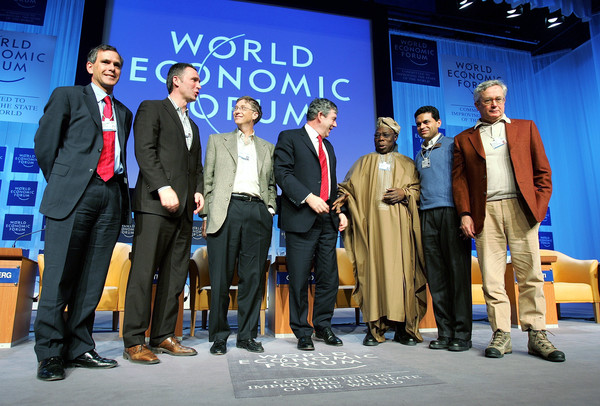World population breached 8 billion mark on November 15, says UN
11/16/2022 / By Arsenio Toledo

The United Nations (UN) has announced that the global population has reached eight billion, believing that the mark was breached on Nov. 15.
Population scientists noted that it took possibly over 200,000 years of human history for the world to reach the one billion mark, which it did some time in 1804. But it only took 12 years for the world to transition from having a population of seven billion to eight.
Thanks to a slowdown in the growth of the global population, the UN estimates that it will take approximately 15 years – until 2037 – for the world population to breach the nine billion mark. (Related: WEF’s Yuval Noah Harari believes the world does not need so many people.)
“It is a crude approximation that is more of a symbolic finding,” said Patrick Gerland, leader of the demographic work at the UN’s Population Division in New York City. “We may have passed it, or it may be a little later, but it’s around this time that humanity is reaching eight billion.”
According to the Population Division, India will surpass China as the world’s most populated country by next year.
Global population growth rapidly slowing down
The latest population update from the UN, released earlier this year, also changed the organization’s long-term projection for population growth. The UN now believes the global population may breach the 8.5 billion mark by 2030 and reach 9.7 billion by 2050.
The UN also believes that the global population will peak at around 10.4 billion during the 2080s and will remain at that level at the turn of the 22nd century. This is down from earlier estimates that the global population will be 11 billion by the year 2100.
The lower population growth shows that the UN believes humanity’s population growth is rapidly slowing down. Analyses of global demographic trends indicate that massive drops in fertility around the world are responsible for this declining population growth.
The global population is currently growing at its slowest rate since 1950, with the world population growing by less than one percent in 2020.
Fertility rates help predict – or throw into disarray – population growth models
The UN’s predictions rely on current fertility rates and how they are expected to change. The difference in assumed fertility rates is behind the UN’s previous model that forecast a larger global population by the year 2100. The biggest change – the Wuhan coronavirus (COVID-19) pandemic of 2020 and the influx of fertility-harming vaccines – has now upended these earlier models.
“If you make even relatively small adjustments in these fertility-rate trajectories, it accumulates, and suddenly a big country can have 100 million more people 80 years from now,” said Tomas Sobotka, a population researcher at the Vienna Institute of Demography in Austria.
Factors that affect fertility rates include humanitarian crises and conflicts – such as what is occurring in Somalia, Syria and Yemen – and state-mandated population control policies like the former one-child policy in China, which only ended in 2015.
Data shows that around two-thirds of the world’s population lives in a country or territory where lifetime fertility is under 2.1 births per woman, which is the level needed for no growth in the long term for a population with a relatively low mortality rate.
Over half of the projected global population growth up to the year 2050 will be contained in just eight countries with higher fertility rates: the Democratic Republic of the Congo, Egypt, Ethiopia, India, Nigeria, Pakistan, the Philippines and Tanzania.
Learn more about the global population – and the efforts by certain groups to control or limit its growth – at PopulationCollapse.com.
Watch this clip with The New American senior editor Alex Newman and microbiologist Dr. Sucharit Bhakdi warning that the vaccines will decimate the world population.
This is from the End Time Evangelist channel on Brighteon.com.
More related stories:
The LGBT agenda has always been about population control, leaked 1969 memo reveals.
Dr. Rima Laibow: Global elites are culling 90 percent of world population to gain power.
Sources include:
Submit a correction >>
Tagged Under:
collapse, conspiracy, depopulation, Fertility, fertility rate, Global Population, overpopulation, population, population collapse, population growth, United Nations, world population
This article may contain statements that reflect the opinion of the author
RECENT NEWS & ARTICLES
COPYRIGHT © 2018 OVERPOPULATION.NEWS
All content posted on this site is protected under Free Speech. OverPopulation.news is not responsible for content written by contributing authors. The information on this site is provided for educational and entertainment purposes only. It is not intended as a substitute for professional advice of any kind. OverPopulation.news assumes no responsibility for the use or misuse of this material. All trademarks, registered trademarks and service marks mentioned on this site are the property of their respective owners.




















